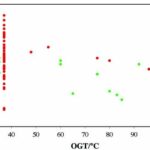Understanding the subtle yet significant difference between “compare” and “contrast” is crucial for effective communication and critical thinking. While often used interchangeably, these two words serve distinct purposes in analyzing and evaluating information. This article delves into the nuances of “compare vs. contrast,” providing clear definitions, examples, and practical applications to help you master their usage.
Defining “Compare”
“Compare” means to examine two or more items to identify their similarities. This process involves highlighting shared characteristics, features, or qualities. We use comparison to draw connections and understand how things are alike. For instance, comparing two laptops might reveal they both have powerful processors and ample storage. Phrases like “similarly,” “both,” “in common,” and “likewise” often signal comparison.
Defining “Contrast”
“Contrast,” on the other hand, focuses on highlighting the differences between two or more items. It involves identifying distinguishing features, characteristics, or qualities that set them apart. Contrasting two laptops might reveal that one has a longer battery life while the other boasts a superior graphics card. Phrases like “on the contrary,” “unlike,” “however,” “whereas,” and “in contrast to” commonly indicate contrast.
Compare and Contrast: Key Differences
While both involve analyzing multiple items, “compare” and “contrast” differ in their objectives and approaches:
Purpose:
- Compare: Aims to identify similarities and shared traits.
- Contrast: Aims to highlight differences and unique characteristics.
Focus:
- Compare: Emphasizes common ground and connections.
- Contrast: Underscores distinctions and disparities.
Method:
- Compare: Uses language that highlights shared attributes (e.g., “both,” “similarly”).
- Contrast: Employs language that emphasizes distinguishing features (e.g., “however,” “unlike”).
Practical Examples: “Compare vs. Contrast” in Action
Let’s solidify our understanding with some real-world examples:
Comparing Smartphones: Two smartphones might be compared based on their operating system (both Android), screen size (both around 6 inches), and price point (both in the mid-range category).
Contrasting Smartphones: The same smartphones could be contrasted based on their camera quality (one with a higher megapixel count), battery life (one lasting significantly longer), and processor speed (one offering superior performance).
Using Synonyms for Enhanced Clarity
Expanding your vocabulary with synonyms can further refine your comparisons and contrasts:
Synonyms for Compare: evaluate, examine, assess, analyze, juxtapose, measure, appraise.
Synonyms for Contrast: differentiate, distinguish, oppose, separate, juxtapose, discriminate, isolate.
Etymological Roots: Delving Deeper
Understanding the origins of “compare” and “contrast” can shed light on their core meanings:
Compare: Derived from the Latin “comparare” meaning “to make equal with,” reflecting its focus on finding similarities.
Contrast: Originates from the Italian “contrastare,” meaning “to stand against,” highlighting its emphasis on opposition and difference.
Conclusion: Mastering “Compare” and “Contrast”
The ability to effectively compare and contrast is fundamental to critical thinking, effective communication, and informed decision-making. By recognizing the distinct purposes and applications of these two powerful analytical tools, you can enhance your writing, strengthen your arguments, and deepen your understanding of the world around you. By accurately employing “compare” and “contrast,” you ensure clarity and precision in conveying your thoughts and analyses.
Sources
Merriam-Webster (Contrast Definition & Meaning), Wikipedia {Contrast (vision)}, Etymonline – Online Etymology Dictionary (Etymology of compare by etymonline), Etymonline – Online Etymology Dictionary (Etymology of contrast by etymonline).

